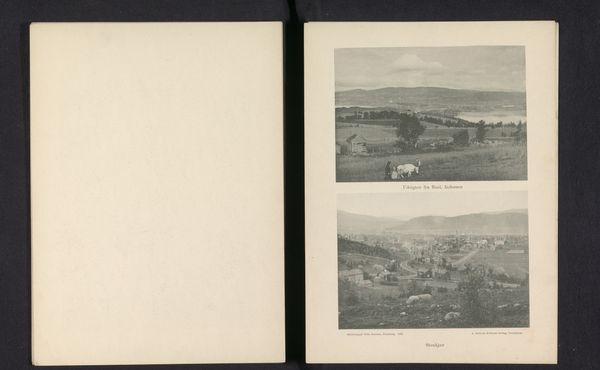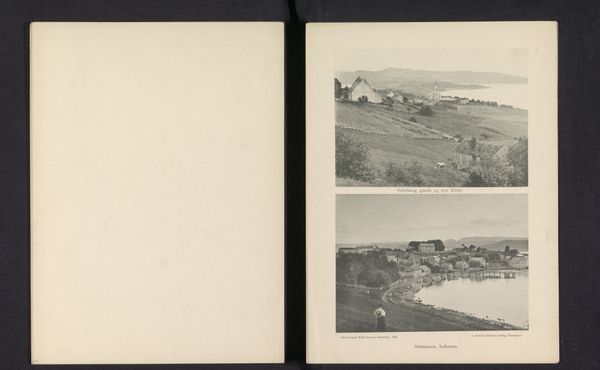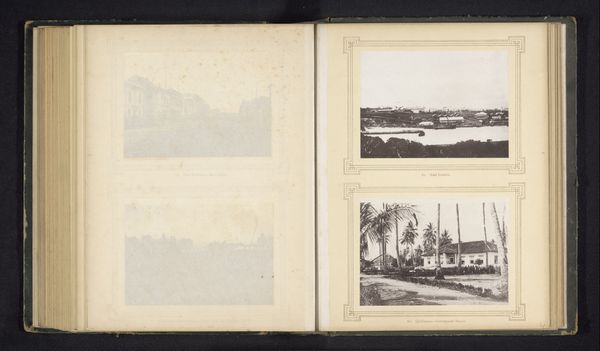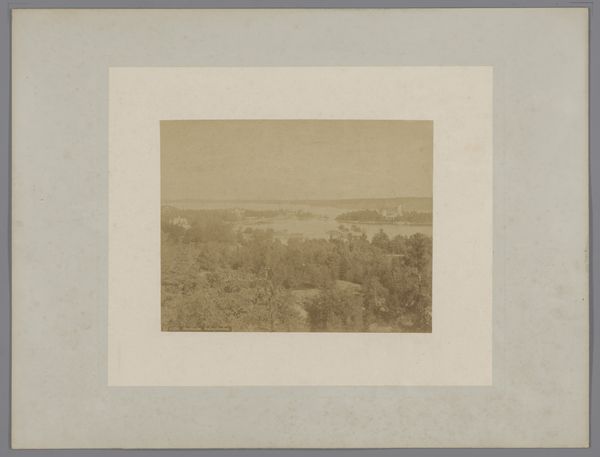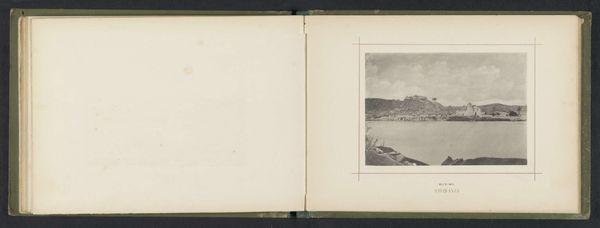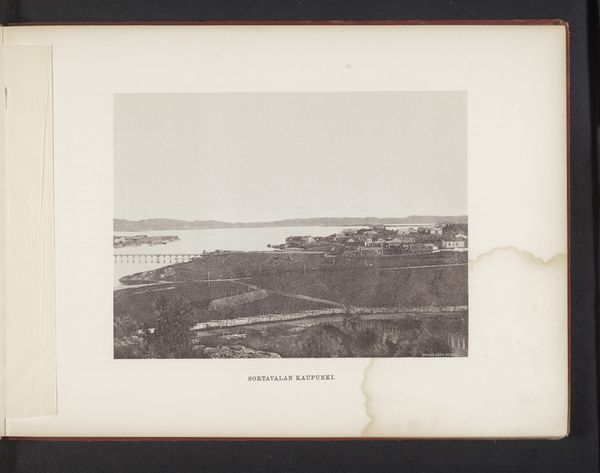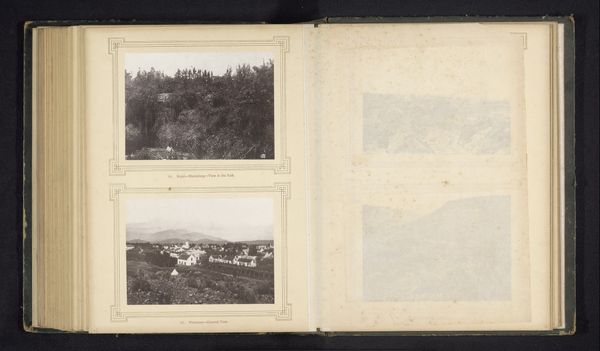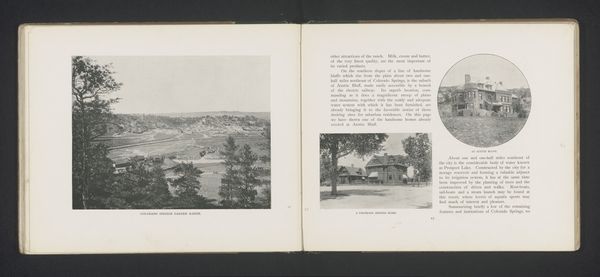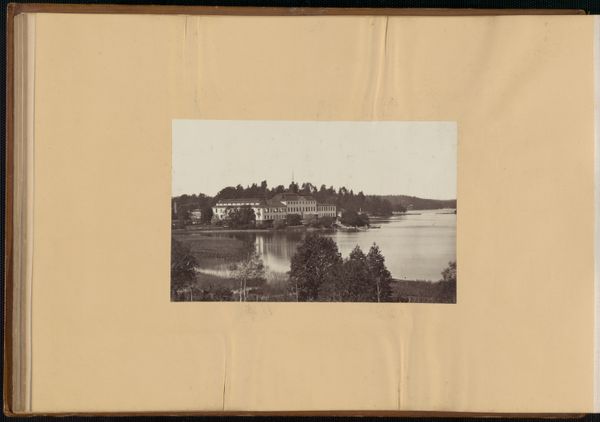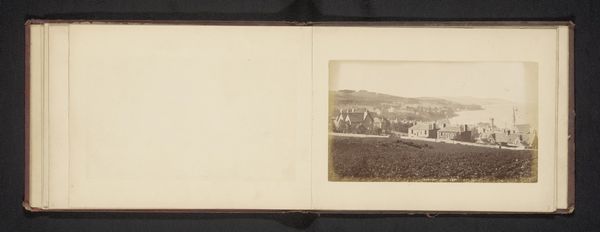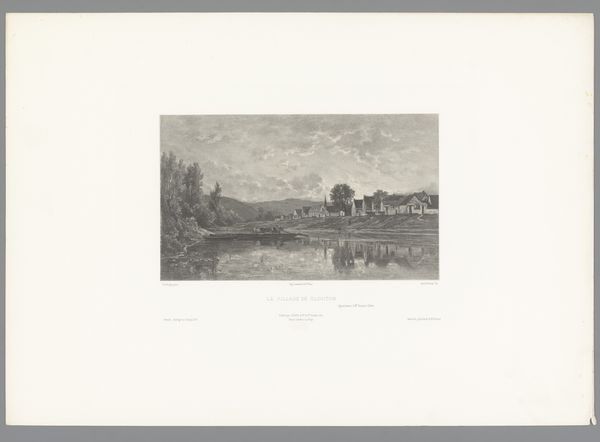
print, photography
# print
#
landscape
#
photography
#
realism
Dimensions: height 325 mm, width 240 mm
Copyright: Rijks Museum: Open Domain
Curator: This photographic print, believed to be crafted before 1897 by Wilhelm Dreesen, captures two views near Sparbu, specifically scenes from Inderøen and Mære in Norway. What strikes you most about it? Editor: I’m immediately drawn to the quiet stillness, that soft gray scale and its composition–there's something deeply soothing and a bit haunting about the scene. A stillness as though caught between dream and remembrance, a landscape suspended in time, and the quality seems so immediate. Curator: Indeed. These tranquil images encapsulate a burgeoning era where photography sought to faithfully mirror reality and even idealize rural life. I sense nostalgia embedded within, as if these vistas are fragments of a fading world, rendered timeless through the lens. Do you perceive the subtle symbolism present in such pastoral scenes? Editor: Oh, absolutely. It is hard not to read the romanticism, and that near cinematic eye towards light. These photographic tableaus also hold an echo of solitude and simplicity—almost like a quiet rebuke against urban industrialization. As an artist I’m struck how something captured in monochrome could also carry such an array of colors that burst inside the inner eye! Curator: The composition emphasizes both detail and distance, from the sturdy barns dotting the first scene to the winding river cutting through the landscape. Note, for instance, the strategic positioning of the river itself which serves as a reflective metaphor. Editor: Yes! It mirrors a constant negotiation between change and constancy, doesn’t it? Look too at how the architecture and the human elements nestled so intimately within nature is striking, like humans existing not separate from nature, but within the vast expanse. What is preserved or revealed when we focus on natural landscapes, like those around Sparbu, from so long ago? What gets carried down and across the years? Curator: Landscapes carry stories of settlement, sustenance, and survival. They are also powerful representations of identity, a profound sense of rootedness to the soil and cultural continuity, aren’t they? This resonates across time. Thank you for sharing such personal insights. Editor: My pleasure. These images hold many conversations across the century. And from my point of view, invite the imagination in unexpected ways.
Comments
No comments
Be the first to comment and join the conversation on the ultimate creative platform.
